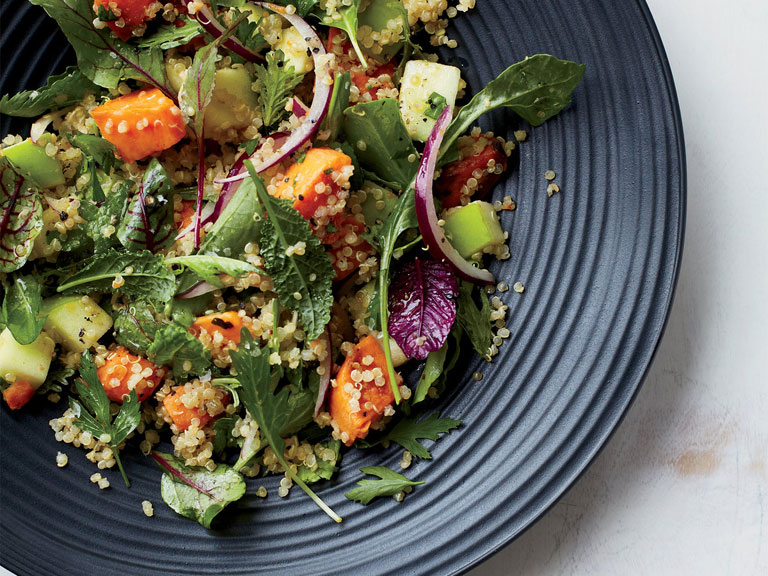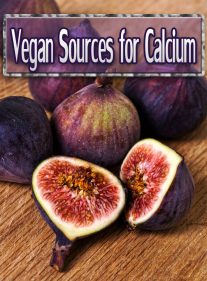
A healthy adult requires 0.8-1.2 grams of protein per kg of body weight, with an active adult requiring 1.0-1.2 grams per kg. I generally work on the 1 to 1 rule in clinical practice, which will, of course, differ depending on each individual’s health status, age or if they are pregnant/breastfeeding.
To put it simply, if someone weighs 65kgs they will be working towards 65 grams of protein per day via their diet. This might sound like a lot, but it is important to think outside the square of meat equals protein. Protein is found in so many different foods, and having a balance of plant-based and animal proteins in your diet is imperative for good health, and of course, variety!
So Why Do You Need Protein?

Satiety
Protein is essential for satiety, meaning it keeps us full for longer. This is not only fantastic for weight loss/fat reduction, but also for modulating our blood glucose levels. When we eat a meal high in protein we keep our blood glucose levels stable, reducing spikes and drops. This additionally prevents sugar cravings, especially in conjunction with a high fiber meal.
Mood
Protein is made up of amino acids, which are required for making neurotransmitters in our brain. The most widely talked about neurotransmitter is serotonin (there are many more), which is important for regulation of mood, anxiety and sleep.
Anyone suffering from poor sleep or changes in mood should always look at what they are putting into their bodies, starting with protein. I encourage clients to try and add some kind of protein to all their meals to boost their neurotransmitter production.
Immune Function
Some of the amino acids that make up proteins stimulate immune function, in turn reducing risk of infection. Healthy muscle mass is also key for our body’s ability to fight infection and illness. This is not rocket science; the stronger our bodies are the easier it is for them to fight off the bad guys!
Muscle Repair and Health
Eating protein does not give you muscles, however in conjunction with the correct exercise, it can assist with their growth and is essential for their repair. Muscles give us the strength and energy to move. The more lean muscle we have, the more fat we burn (even in our sleep!). I like to think of muscles as little power-houses in our body. Proteins are also a major structural component of cells, hair and skin.
Where To Get Protein?
1. Add Quinoa to Your Salad

Did you know quinoa contains more protein than carbs? Cooking quinoa is very simple (just like rice) and once cooked you can keep it in the fridge to add to salads to bump up the protein.
2. Eat Eggs
My all time favourite food, eggs are like mini vitamin pills that are so versatile, cheap, easy to prepare and jam-packed with protein. Short on time? Boil the night before and take to work.
3. Add Natural Yogurt to Your Cereal
Breakfast cereals are generally high in refined carbohydrates and lacking in protein. Add a dollop of natural yogurt and sprinkle some ground nuts and seeds to boost the nutrient content.
4. Snack on Nuts and Seeds
These little gems are high in protein and good fats, not to mention easy to carry with you anywhere and everywhere. Ideally, opt for the ‘raw’ variety and if you get bored easily, try spicing them up with herbs and spices.
5. Pump Up Your Smoothie
Lets face it, smoothies are very in at the moment. They can be a fantastic way to get lots of nutrients into one glass. However, they often lack protein. Get hold of a good quality protein powder to improve your smoothie’s protein content and keep you full for longer.
6. Make a Super Salad
Sprinkle nuts and seeds onto your salad for added flavor, crunch and protein. Try dry roasting them with some tamari for a flavor sensation!
7. Old School Meat and 3 Veg
Sometimes, going back to basics is the easiest way to get the nutrients you need in a hurry. Making meat (or fish) and veg for dinner is quick and nutritious! Opt for above-ground varieties of vegetables rather than starchy ones like potatoes.
8. Tofu Can Be Delicious

When done well, tofu can be a delicious adjunct to salads, stews, curries, burgers or stir-fry’s. I suggest marinating your tofu for a few hours before cooking to increase flavor.
9. Switch White Rice for Brown
So simple – just make the swap! Brown rice contains more protein than its white counterpart.
10. Add Legumes
Making a soup? Add lentils. Making bolognese? Add lentils. Making burritos? Add beans. Legumes are so versatile, delicious, easy to prepare and packed with protein. If lacking time, tinned is fine, but make sure you rinse them before using.
11. Fall in Love with Hummus
So cheap and easy to make, this delicious dip can be used as a spread, dressing or snack.
12. Make Energy Balls
Such a delicious snack, and essentially you just need to throw whatever nuts and seeds you have into your blender with some dried fruit, tahini and/or honey, then roll! Keep in an airtight container in the fridge and enjoy.
13. Add Tuna
If you’re time poor and all you can do is grab a green salad for lunch, run past the supermarket and get a tin of high quality, sustainably sourced tuna. Tuna is packed full of protein and good fats and will turn your nutrient-poor lunch into something that will get you through the rest of the day.
14. Falafels are Yum
We can now buy pre-made, healthy falafels from the health food store and supermarket. Such a great food to keep in your fridge and add to meals to improve the protein content. Time to make your own? Even better! I add these bad boys to my salads or snack on them with hummus.
15. Plan Ahead
The key to a good diet is planning ahead. Do a big shop and plan your meals. This will prevent you from making poor food choices that are lacking in nutrients.
Following some of these simple tips can improve your energy levels, keep you full for longer and reduce your cravings for sweet, processed foods.




Leave a Reply